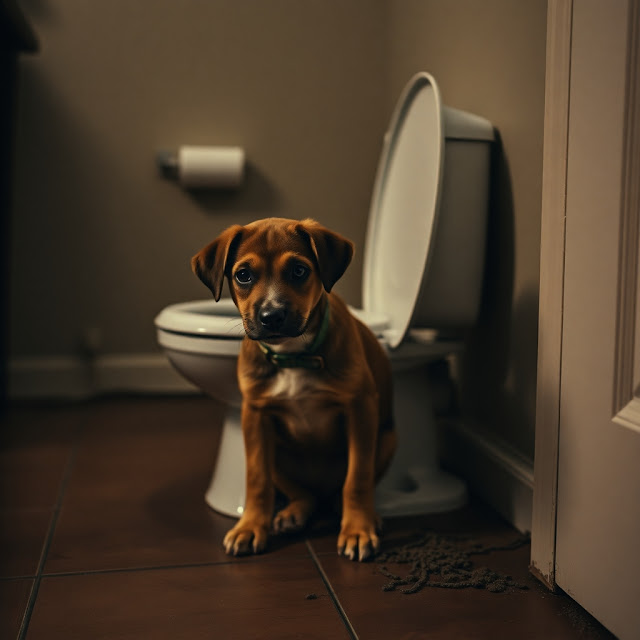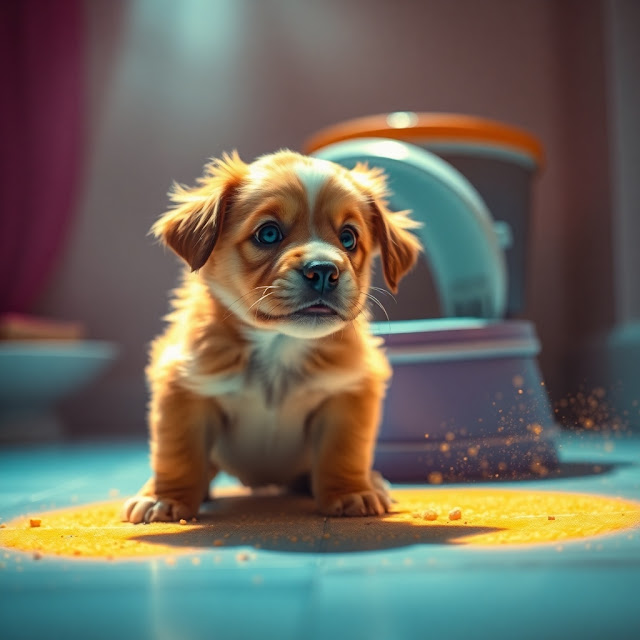How Do I Potty Train My Puppy? 🐶🚽
How Do I Potty Train My Puppy? 🐶🚽
So, you just brought home an adorable little fluff ball, and everything is amazing… until you realize they think your carpet is their personal bathroom. 😅
Don't panic! Potty training your puppy is totally doable—yes, even if it feels like they pee every five minutes. Let’s go step by step and get your pup on track to becoming a potty pro! 🎉
How Long Does Potty Training Take? ⏳
Brace yourself—puppy potty training isn’t an overnight thing. It can take anywhere from a few weeks to a few months depending on the pup. But with patience, consistency, and the right approach, you’ll get there!
A Few Quick Facts:
✅ Puppies can usually hold their bladder one hour for every month of age (so a 2-month-old pup = ~2 hours max).
✅ Smaller breeds may take longer to train because they have tiny bladders.
✅ Accidents will happen—so don’t stress too much!
Step 1: Set Up a Potty Schedule 📅
Routine is everything! Puppies thrive on consistency, so try to take them out at the same times every day:
🕖 First thing in the morning
🍗 After eating or drinking
🎾 After playtime
💤 Before bedtime
And, of course, anytime they start sniffing around suspiciously. 👀
Step 2: Choose a Designated Potty Spot 🚻
Pick a specific potty area outside (or a pee pad spot if you’re training indoors). Every time you take them out, go to the same spot so they associate it with doing their business. Bonus tip: Use a consistent potty cue like "Go potty!" so they learn what’s expected.
Step 3: Reward, Reward, Reward! 🎉
When your puppy potties in the right place, act like they just won an Olympic gold medal. Excited praise, belly rubs, treats—go all out! Positive reinforcement helps them connect the dots quickly.
❌ What NOT to do: Never punish them for accidents. Scolding or rubbing their nose in it doesn’t help (and might make them scared to potty in front of you). Instead, redirect and reinforce good behavior.
Step 4: Supervise Like a Hawk 👀
Keep a close eye on your pup, especially in the early days. If you can’t supervise, use a crate or a playpen to prevent accidents. The more freedom they have, the more chances they have to sneak off and pee somewhere questionable.
💡 Pro tip: If they start sniffing, circling, or squatting, scoop them up and rush them outside!
Step 5: Crate Training Can Help 🏡
Dogs don’t like to potty where they sleep, so using a properly sized crate (just big enough for them to stand, turn, and lie down) can help encourage holding their bladder.
Golden rule: Take them out immediately after they leave the crate to avoid accidents.
Step 6: Clean Up Accidents the Right Way 🧼
Accidents will happen. When they do, clean them up with an enzyme-based cleaner (not just regular soap and water) to eliminate odors. If it still smells like pee, your puppy might think it’s an approved potty spot! 🚫
Common Potty Training Mistakes & How to Fix Them ⚠️
❌ Waiting Too Long Between Potty Breaks
🔹 Puppies have tiny bladders. Take them out often, even if they don’t seem to need it!
❌ Not Using Rewards Properly
🔹 Reward them immediately after they potty outside—don’t wait until you get back inside.
❌ Getting Frustrated
🔹 Stay patient! Yelling or punishing won’t speed up the process.
❌ Skipping a Routine
🔹 Consistency is key! Stick to a schedule, and it’ll make a huge difference.
When to Worry: Signs of a Medical Issue 🏥
If your puppy is having constant accidents despite following a solid training plan, check for:
🚨 Frequent urination (every few minutes)
🚨 Straining to pee
🚨 Blood in urine
🚨 Peeing in their sleep
These could be signs of a UTI or other health issue, so a vet visit is a good idea.
Final Thoughts: You Got This! 💪🐶
Potty training a puppy takes time, patience, and a lot of paper towels. But stick to a routine, use positive reinforcement, and stay consistent—you’ll get there!
And hey, one day, you’ll look back and laugh at all those “oops” moments. (Well, maybe. 😂)
Got any potty training success stories (or horror stories)? Drop ‘em in the comments below! 👇











